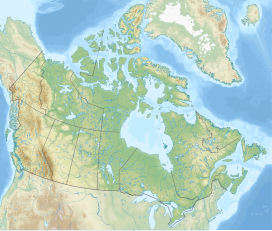| Mount Morrison | |
|---|---|
 Mount Morrison seen from Buller Pond | |
| Highest point | |
| Elevation | 2,765 m (9,072 ft) [1] [2] |
| Prominence | 133 m (436 ft) [1] |
| Parent peak | Mount Turner (2806 m) [1] |
| Listing | Mountains of Alberta |
| Coordinates | 50°50′16″N115°28′45″W / 50.83778°N 115.47917°W [3] |
| Geography | |
 | |
| Interactive map of Mount Morrison | |
| Country | Canada |
| Province | Alberta |
| Protected area | Banff National Park [4] |
| Parent range | |
| Topo map | NTS 82J14 Spray Lakes Reservoir [3] |
| Geology | |
| Rock age | Cambrian |
| Rock type | Sedimentary rock |
| Climbing | |
| First ascent | 1955 Don K. Morrison [1] |
| Easiest route | Scramble [5] |
Mount Morrison is a 2,765-metre (9,072-foot) mountain summit located in the upper Spray River Valley of southern Banff National Park, in the Canadian Rockies of Alberta, Canada. Mount Morrison in not visible from any road in Banff Park, however, it can be seen from Alberta Highway 742, also known as the Smith-Dorrien/Spray Trail in Kananaskis Country. Mount Morrison's nearest higher peak is Mount Turner, 1.8 km (1.1 mi) to the north. [1]


